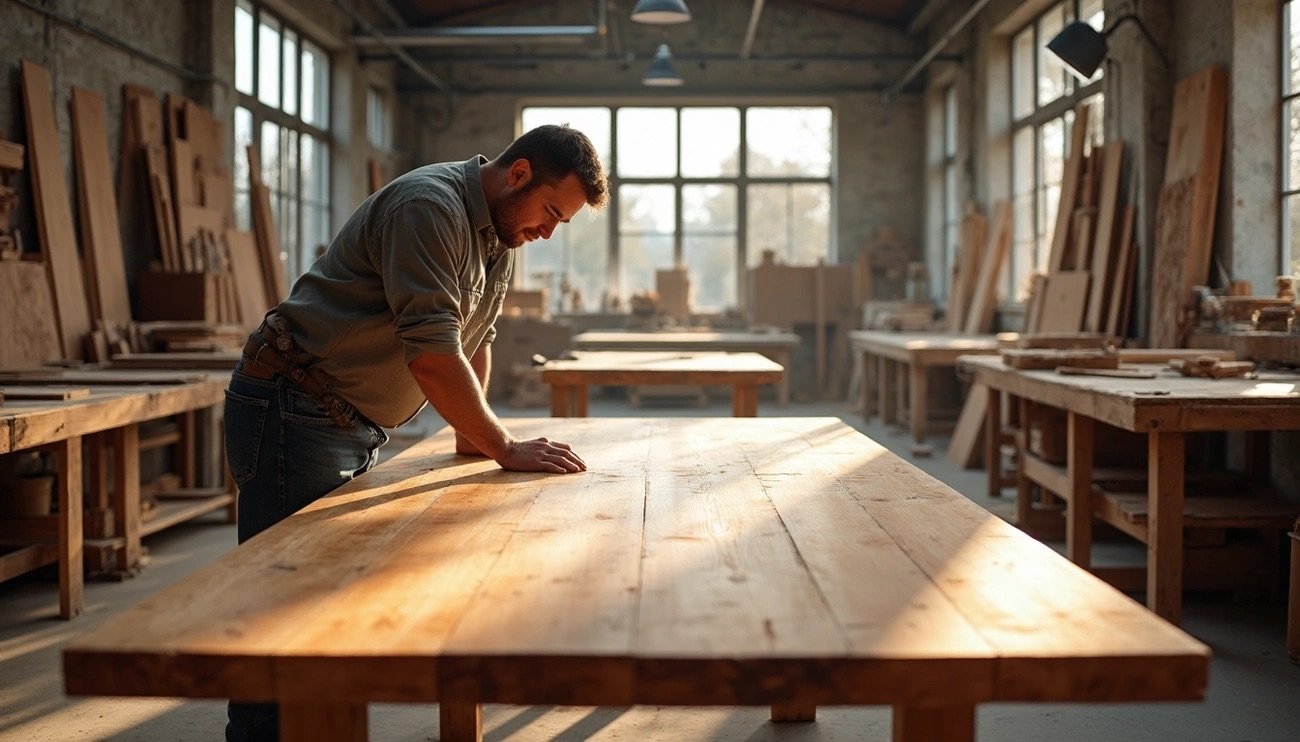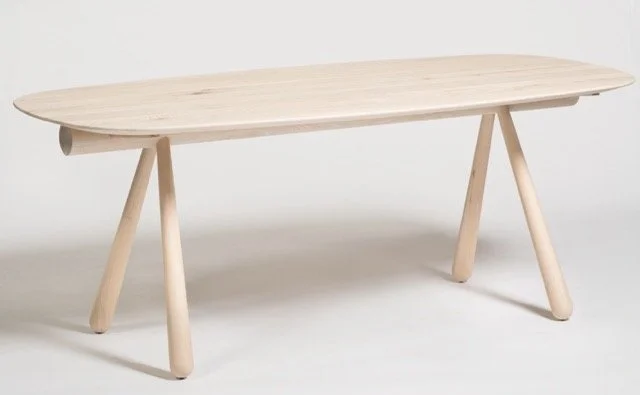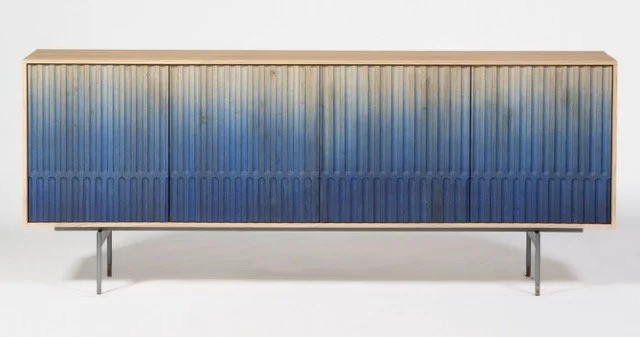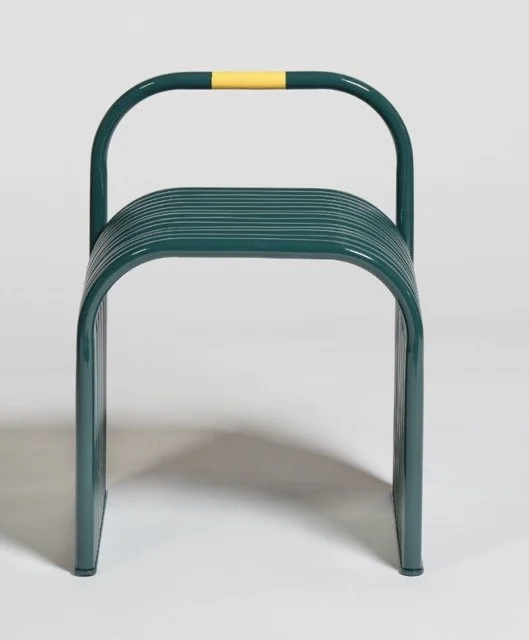How to choose PEFC/FSC-certified wood: An expert's guide to furnishings
Today, certified wood is an essential choice for any high-quality interior design project. In France, two labels set the standard in this field: PEFC and FSC. These certifications, far from being mere marketing arguments, guarantee the complete traceability of wood, from the forest to the final piece of furniture.
Choosing PEFC or FSC-certified wood means opting for a versatile, timeless material that comes from responsibly managed forests. The PEFC label, founded in 1999, is present in 55 countries and certifies forests through strict standards that apply to forest owners, operators and companies in the timber industry. Similarly, FSC certification, established in 1993 by an independent non-governmental organization, ensures sustainable forestry practices. In France, over 3,000 companies certify their products in partnership with PEFC.
For several years now, we at Les Agenceurs have been choosing to use only these certified woods in our top-of-the-range interior design projects. Our commitment goes beyond a simple CSR trend - it's a pragmatic approach rooted in our industrial know-how and our mastery of materials. In this article, we explain why and how our choice of certified wood guarantees you, as architects, decorators or project managers, a reliable and responsible partnership for your most demanding projects.
Understanding the challenges of responsible wood in high-end fixtures and fittings
In the high-end interior design sector, the use of certified wood is no longer an option but a necessity. Interior design professionals now recognize the fundamental importance of selecting materials that combine aesthetic quality with environmental responsibility.
Why architects and interior designers prefer sustainable materials
Architects and interior designers are increasingly incorporating PEFC or FSC-certified wood into their designs for several key reasons. Firstly, these certifications guarantee consistent material quality, a non-negotiable criterion for high-end projects. Secondly, working with certified materials reinforces their professional credibility with an increasingly well-informed clientele.
Design professionals also appreciate the complete traceability offered by these labels. This transparency enables architects to explain precisely the origin of the materials they use - a powerful selling point for their own clients. What's more, this approach is part of a long-term vision of their professional practice, aligned with the growing demands of environmental regulations in the building industry.
Evolving customer expectations in terms of eco-responsibility
Customer expectations have changed dramatically in recent years. Eco-responsibility is no longer perceived as a mere bonus, but as a decisive selection criterion. Premium customers are now looking for projects that combine luxury and sustainability, without compromise.
This trend is particularly evident in the luxury hotel and high-end office sectors, where brand image is closely linked to environmental values. As a result, offering certified wood furnishings is becoming a differentiating selling point for specifiers.
The environmental impact of materials selection
Choosing certified wood represents a concrete commitment to preserving the world's forests. Indeed, these certifications guarantee that for every tree removed, at least one is replanted, ensuring the sustainability of forest resources.
However, the impact of this choice goes far beyond simple replanting. Sustainable forest management preserves biodiversity, protects soils and maintains ecosystems. What's more, wood remains a naturally renewable material that stores carbon over its entire lifespan, unlike other materials whose production generates significant CO2 emissions.
By specifically choosing PEFC or FSC-certified wood for our furnishing projects, we affirm our conviction that aesthetic excellence can and must go hand in hand with a responsible approach.
PEFC and FSC labels: definitions, guarantees and differences
PEFC and FSC certifications dominate the global responsible wood market, each with its own specific features and guarantees. Understanding their differences will help you make an informed choice for any high-end furnishing project.
PEFC label: PEFC wood certification and traceability
The Programme for the Endorsement of Forest Certification schemes (PEFC), founded in 1999, is today the world's largest forest certification scheme, with 230 million hectares certified [1]. This voluntary certification guarantees the origin and traceability of products from sustainably managed forests. As an "umbrella" organization, PEFC assesses and recognizes national forest certification systems according to international criteria [2]. The PEFC chain of custody rigorously tracks forest materials from the forest to the end consumer, guaranteeing their responsible provenance [1].
FSC label: sustainable management and respect for local populations
The Forest Stewardship Council (FSC), established in 1993, sets some of the highest standards for sustainable forest management [3]. This certification is distinguished by its focus on the rights of workers, local communities and indigenous peoples [4]. The FSC label guarantees three fundamental aspects: respect for workers' rights, the socio-economic well-being of local communities and the preservation of the forest's ecological functions [5]. FSC offers three types of label: FSC 100% (materials sourced exclusively from certified forests), FSC Recycled (100% recycled materials) and FSC Mix (mix of sources) [6].
Geographical and structural differences between PEFC and FSC
Although they pursue the same objective, the two systems differ in their approach. PEFC adopts a "bottom-up" method, recognizing national systems according to international criteria (third-party certification) [7]. Conversely, FSC applies a "top-down" approach, with global standards adapted nationally (second-party certification) [7]. PEFC requires a minimum of 70% certified materials in its products, while FSC requires only 50% [8]. Geographically, PEFC covers 280 million hectares versus 180 million for FSC, in 55 and 80+ countries respectively [9].
How to recognize FSC or PEFC certified wood
To identify certified wood, first check for the PEFC (green tree) or FSC (tree with tick) logo on the product [10]. Each certified supplier has a unique code, usually in the format "TT-COC-1234" or "SGS-COC-12244", visible on invoices and delivery notes [10]. To authenticate a certification, consult the official databases: www.fsc-info.org for FSC and register.pefc.cz for PEFC [10]. Also check that the certificate specifically covers the product purchased, as a certified supplier may also offer non-certified products [10].
Why Les Agenceurs made this choice years ago
At Les Agenceurs, the adoption of PEFC- and FSC-certified wood is not a recent decision, but a long-standing commitment rooted in our corporate philosophy. Our pragmatic approach to high-end fittings is based on concrete, responsible choices.
Reasoned sourcing of PEFC/FSC-certified wood
Our factory rigorously adheres to FSC (Forest Stewardship Council) standards, considered the benchmark for responsible forestry [11]. This certification guarantees that our materials come from forests managed according to strict environmental, social and economic criteria. We also use only wood from sustainably managed forests, in line with the ecological requirements of the PEFC label [12]. This dual commitment ensures that every panel, shelf and finish we offer meets the highest standards of sustainability.
Control of the production chain from the Porto plant
Our strength lies in the fact that we manage the entire project, from design to installation, including manufacturing in our own workshops [12]. This complete control enables us to monitor every stage of the process and ensure consistent quality. Our teams systematically check the origin of all raw materials, guaranteeing that our protected forests are preserved and that the wood never comes from controversial sources [13].
Reducing waste and reusing offcuts
In our controlled production environment, we are able to significantly reduce wood waste compared to traditional on-site construction. Comparable studies show that this type of approach can reduce wood waste by 32% [14]. What's more, our commitment to the circular economy enables us to reuse discarded materials for our heating systems, drying chambers, or the creation of wood blocks for the future manufacture of smaller items [15].
Guaranteed traceability for architects and end customers
Our traceability system offers architects and interior designers a powerful selling point. Specifying certified wood not only meets the most stringent sustainability standards, but is also a selling point for environmentally conscious developments [16]. For hotel, office or premium residential projects, this complete traceability strengthens the brand image and demonstrates a responsible approach that goes beyond mere marketing rhetoric.
Every certification issued with our products is more than just compliance-it tells a story of design, integrity and environmental stewardship [11].
What this means in concrete terms for your layout projects
The use of PEFC and FSC-certified wood transforms every interior design project, offering tangible benefits, both aesthetically and ethically. Let's take a look at what this choice really brings to your projects.
Perceived quality: look, feel, durability
Certified wood stands out for its immediately perceptible superior quality. Species from sustainably managed forests are generally more dimensionally stable and more resistant to variations in humidity. This stability guarantees more precise finishes and longer-lasting fittings.
Beyond the technical characteristics, it's the sensory aspect that makes the difference. The authentic grain and natural veins of certified wood create a unique tactile experience, particularly appreciated in high-end projects. End customers instinctively perceive this quality, which contributes to the warm, prestigious atmosphere of the space.
Stronger sales pitch for architects and interior designers
For design professionals, offering certified wood is a differentiating argument. Firstly, it demonstrates your commitment to responsible practices without compromising aesthetics. What's more, in a context where calls for tender increasingly include environmental criteria, this certification becomes a decisive competitive advantage.
PEFC and FSC certifications also meet the requirements of building labels such as HQE, BREEAM or LEED. In this way, you make it easier for your customers to obtain these accreditations, while offering exceptional materials.
Enhancing the project's image (hotels, HQE offices, premium residential)
In the premium hotel sector, where brand image is paramount, the use of certified wood becomes a powerful storytelling element. Establishments can communicate their ecological commitment to a clientele that is increasingly sensitive to these issues.
For office spaces, especially those aiming for HQE certification, the choice of responsible materials contributes directly to the well-being of occupants, while reinforcing the company's corporate image.
For high-end residential applications, certified wood brings an ethical dimension to luxury. This combination of refinement and responsibility perfectly matches the aspirations of affluent customers concerned about the environmental impact of their homes.
Conclusion
The choice of PEFC and FSC-certified wood represents much more than a simple environmental trend. This pragmatic approach has become an essential standard for top-of-the-range furnishings. Indeed, these certifications guarantee not only the responsible provenance of materials, but also their superior quality and complete traceability.
At Les Agenceurs, we adopted this philosophy several years ago, convinced that aesthetic excellence must go hand in hand with concrete responsibility. Our factory in Portugal rigorously applies these principles at every stage of production. As a result, every made-to-measure furnishing project benefits from a double guarantee: that of mastered industrial know-how and that of a reasoned sourcing of certified materials.
For you, architects and interior designers, this partnership with Les Agenceurs brings considerable added value. Firstly, you offer your customers fittings whose visual and tactile quality immediately stands out. Secondly, you strengthen your sales argument with recognized certifications that meet the growing demands of eco-responsibility.
Projects for hotels, offices or premium residences gain in coherence and authenticity. Certainly, certified wood tells a story that resonates with contemporary values without ever sacrificing aesthetics or functionality.
Our commitment to PEFC and FSC-certified wood is the ultimate testimony to our vision: to be a reliable partner who understands the current challenges of high-end interior design. This approach, far from being a simple adaptation to a passing fad, is the very essence of our profession and of our relationship with you, the demanding specifier. Together, we create spaces that combine timeless beauty with sustainable responsibility.
FAQs
Q1. What is the main difference between PEFC and FSC certification? PEFC is the world's largest forest certification scheme, adopting a "bottom-up" approach with national standards, while FSC applies a "top-down" approach with global standards adapted locally. PEFC requires a minimum of 70% certified materials in products bearing the label, compared with 50% for FSC.
Q2. How can I identify a PEFC or FSC-certified wood product? Look for the official PEFC (green tree) or FSC (tree with tick) logo on the product. Also check the unique code of the certified supplier on invoices and delivery notes. You can authenticate certification by consulting the official PEFC and FSC online databases.
Q3. What are the advantages of using certified wood in high-end interior design projects? Certified wood offers perceptibly higher quality, better dimensional stability and increased resistance. It strengthens the arguments of architects and decorators, makes it easier to obtain building certifications, and enhances the image of the project, particularly in hotels, HQE offices and premium residential.
Q4: How do PEFC and FSC certifications help preserve the environment? These certifications guarantee sustainable forest management, ensuring that trees harvested are replanted. They preserve biodiversity, protect soils and maintain ecosystems. What's more, certified wood stores carbon throughout its life cycle, helping to combat climate change.
Q5. Why are customers increasingly interested in certified wood products? Customers, particularly in the premium segment, are now looking for projects that combine luxury and sustainability. The use of certified wood meets their growing expectations in terms of eco-responsibility, reinforces the brand image of projects and demonstrates a concrete commitment to preserving forest resources.
References
[1] - https://www.rina.org/en/pefc-coc
[2] - https://www.sgs.com/en-fr/services/pefc-chain-of-custody
[3] - https://fsc.org/en/forest-sustainability
[4] - https://fsc.org/sites/default/files/2019-07/FSC-human rights Final 04-07_WEB.pdf
[5] - https://www.ecocert.com/en/article/zoom-on-fsc-r-a-label-for-sustainable-forest-management-5090932
[6] - https://fsc.org/en/label
[7] - https://www.hazel4d.com/articles/fsc-or-pefc/
[8 ] - https://pefc.org/news/pefc-calls-on-fsc-to-focus-on-sustainable-forest-management
[ 9] - https://duffieldtimber.com/the-workbench/buyers-guides/pefc-vs-fsc-differences
[ 10] - https://assets.publishing.service.gov.uk/media/5a7d4f9ae5274a2af0ae2d60/Practical_Guide_to_Checking_Certificates.pdf
[ 11] - https://www.havwoods.com/a
A customized layout project?
Our experts are with you from idea to installation. Design, materials, technology: let's discuss your needs





